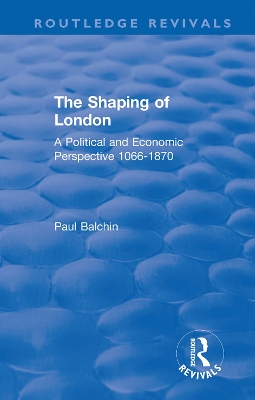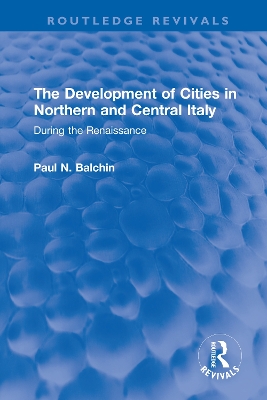Routledge Revivals
2 total works
Originally published in 2014, The Shaping of London chronologically examines the likely impact of wars, dynastic struggles, demographic change and economic growth on the physical fabric of London. The book traces the evolution of architectural style in London within the context of politics and economics, it looks at architecture over broad periods from Romanesque to Jacobean, and from Palladian to Victorian. Looking at the changes of London from 1066 to 1870, Balchin argues that London was created through a mixture of kings, merchants, governors and industrialists, which has lent itself to the creation of notable buildings, and public places in London and in turn their spatial dispersal has helped to determine the shape and areal extent of the metropolis.
The Development of Cities in Northern and Central Italy
by Paul N Balchin
Originally published in 2019, this book provides a comprehensive account of a formative historical period, uniquely describing Renaissance architecture as the physical manifestation of political and economic change. The book illustrates how shifts in architectural style and design were paralleled with Northern and Central Italy’s external and internal conflicts, the evolution of urban and regional government, and economic and demographic growth. Covering the full extent of the Renaissance period, Balchin charts the era’s medieval roots and its transformation into Mannerist and Baroque tendencies. He demonstrates how developments in architecture and planning were inextricably linked to political and economic power, and how these relationships shifted from city to city over time.

